
La Joliette: The Vibrant Heart of Marseille's Waterfront
Discover La Joliette in Marseille: A bustling waterfront neighbourhood where maritime history meets modern urban charm, offering shopping, culture, and stunning sea views.
La Joliette is a captivating blend of the old and the new, making it one of the most dynamic neighbourhoods in Marseille. Centrally located along the waterfront, this area offers a unique experience where maritime history meets modern urban development. Stroll along the beautifully renovated docks and discover the iconic Les Terrasses du Port shopping mall, filled with an array of boutiques, restaurants, and cafes. The panoramic view of the Mediterranean Sea from here is simply breathtaking. Meander through the streets and you'll encounter the striking architecture of La Major Cathedral, a magnificent structure that seamlessly blends Romanesque and Byzantine styles. Adjacent to the cathedral is the MuCEM, the Museum of European and Mediterranean Civilisations, which offers a deep dive into the rich cultural tapestry of the region. The museum's modern design juxtaposed against the historic Fort Saint-Jean creates a visually appealing contrast that will leave you in awe. For a touch of local flavor, visit the Marché aux Puces de Marseille, a bustling flea market where you can find unique souvenirs and experience the vibrant local culture. La Joliette is also home to numerous art galleries and cultural centers, making it a haven for art enthusiasts. The neighbourhood’s convenient location offers easy access to public transport, making it an ideal base for exploring the rest of Marseille.
Local tips in La Joliette
- Visit the MuCEM early in the day to avoid long queues and fully enjoy the exhibits.
- Take a leisurely walk along the waterfront at sunset for the best photo opportunities.
- Explore local cafes for authentic Marseille cuisine and enjoy people-watching.
- Use public transport; La Joliette is well-connected and parking can be difficult.
- Check the local event calendar; La Joliette often hosts cultural events and festivals.
La Joliette: The Vibrant Heart of Marseille's Waterfront
La Joliette is a captivating blend of the old and the new, making it one of the most dynamic neighbourhoods in Marseille. Centrally located along the waterfront, this area offers a unique experience where maritime history meets modern urban development. Stroll along the beautifully renovated docks and discover the iconic Les Terrasses du Port shopping mall, filled with an array of boutiques, restaurants, and cafes. The panoramic view of the Mediterranean Sea from here is simply breathtaking. Meander through the streets and you'll encounter the striking architecture of La Major Cathedral, a magnificent structure that seamlessly blends Romanesque and Byzantine styles. Adjacent to the cathedral is the MuCEM, the Museum of European and Mediterranean Civilisations, which offers a deep dive into the rich cultural tapestry of the region. The museum's modern design juxtaposed against the historic Fort Saint-Jean creates a visually appealing contrast that will leave you in awe. For a touch of local flavor, visit the Marché aux Puces de Marseille, a bustling flea market where you can find unique souvenirs and experience the vibrant local culture. La Joliette is also home to numerous art galleries and cultural centers, making it a haven for art enthusiasts. The neighbourhood’s convenient location offers easy access to public transport, making it an ideal base for exploring the rest of Marseille.
Iconic landmarks you can’t miss
Palais Longchamp
Explore the grandeur of Palais Longchamp, a historical park in Marseille featuring stunning fountains, museums, and lush gardens perfect for relaxation.
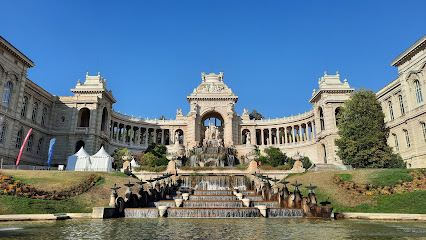
Cathédrale La Major
Discover the breathtaking Cathédrale La Major in Marseille, a stunning symbol of architectural beauty and rich history by the Mediterranean Sea.

Marseille Cathedral
Discover the architectural wonder of Marseille Cathedral, a stunning blend of history and art in the heart of Marseille.

Cosquer Méditerranée
Explore the breathtaking prehistoric art and history at Cosquer Méditerranée, a captivating museum in Marseille that merges culture with immersive technology.
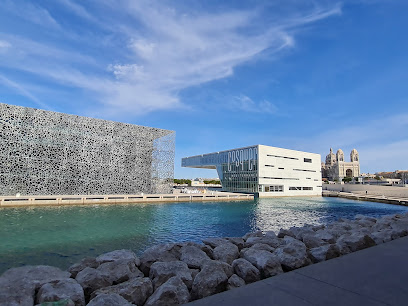
Old Port of Marseille
Discover the vibrant atmosphere and historical charm of the Old Port, the heart of Marseille, where culture meets the Mediterranean Sea.
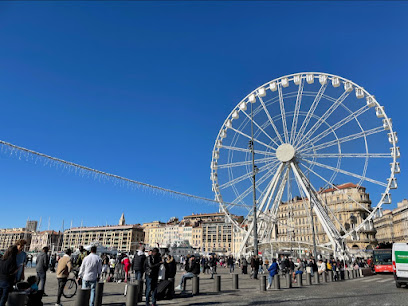
Le Panier Marseillais
Experience the vibrant culture, historical charm, and unique shopping of Le Panier Marseillais in the heart of Marseille, France.
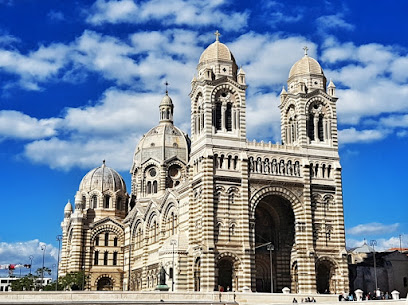
Abbaye Saint-Victor
Explore the historic Abbaye Saint-Victor in Marseille, where ancient architecture meets serene landscapes, offering a unique glimpse into the city’s rich past.
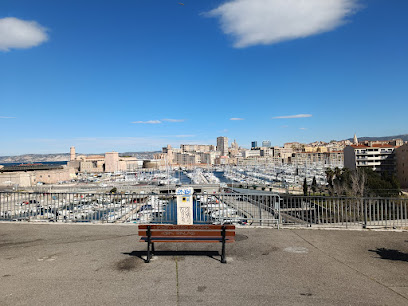
Fort Saint-Jean
Explore the historic Fort Saint-Jean in Marseille, a stunning landmark offering breathtaking views and rich maritime history along the Mediterranean coast.
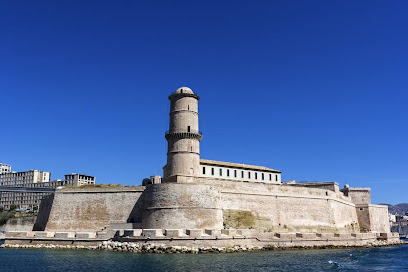
Place d'Armes
Explore the captivating Place d'Armes at Fort Saint-Jean, Marseille, where history, culture, and stunning Mediterranean views come together.
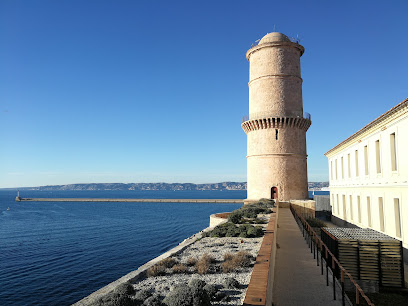
Tour du Roi René
Discover the historical marvel of Tour du Roi René, a stunning landmark in Marseille offering breathtaking views and a journey through the city's rich heritage.
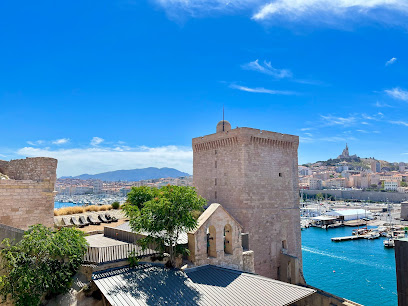
Quartier du panier
Explore the vibrant streets of Quartier du Panier in Marseille, where art, history, and local culture converge in a colorful atmosphere.
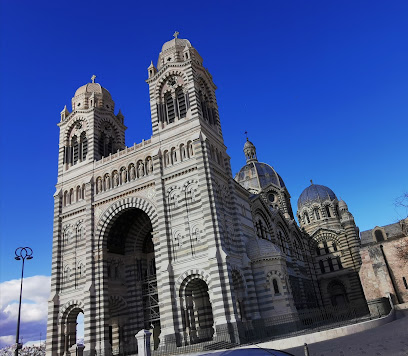
Maison Diamantée
Discover the architectural wonder of Maison Diamantée in Marseille, a historic monument showcasing intricate design and cultural significance.
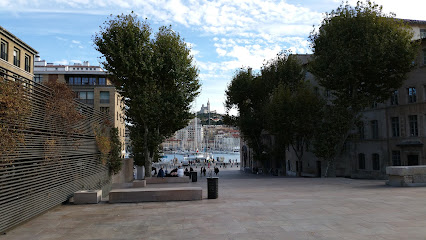
Mémorial des Déportations de la Ville de Marseille
Explore the Mémorial des Déportations in Marseille, a poignant museum dedicated to the memory of deported individuals during WWII, along the beautiful Quai du Port.
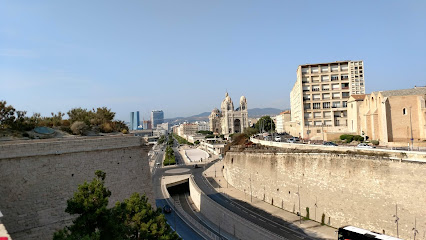
Place de Lenche
Experience the vibrant atmosphere and rich history of Place de Lenche, a charming square in the heart of Marseille, perfect for relaxation and exploration.
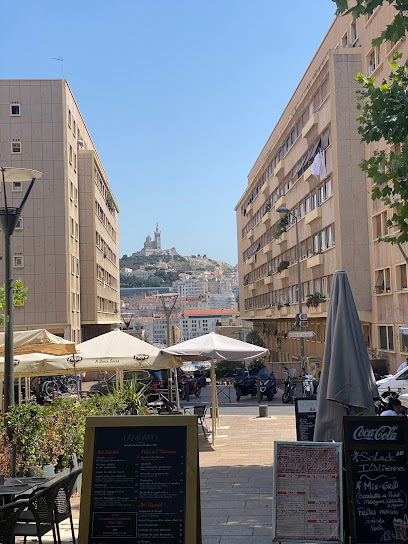
Place des moulins
Discover the hidden gem of Place des Moulins in Marseille—a charming square filled with history, local culture, and delightful streets to explore.
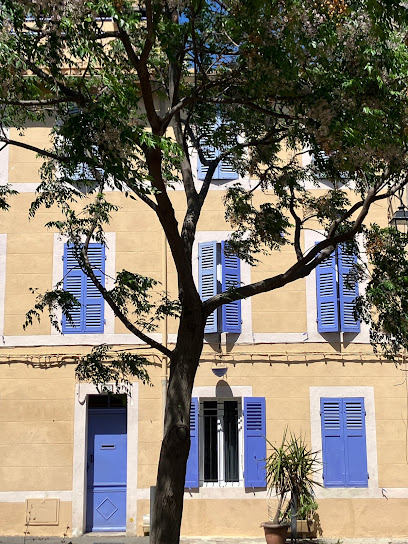
Unmissable attractions to see
Basilica of Notre-Dame of la Garde
Discover the breathtaking Basilica of Notre-Dame of la Garde, a must-visit icon in Marseille with stunning views and rich history.
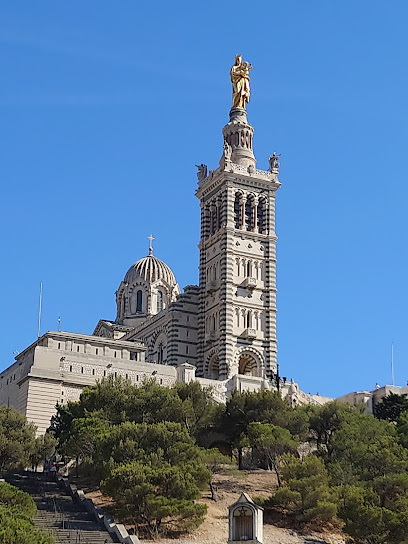
Mucem - Museum of Civilizations of Europe and the Mediterranean
Explore the Mucem in Marseille: a stunning museum dedicated to Mediterranean civilizations with breathtaking architecture and rich cultural exhibitions.
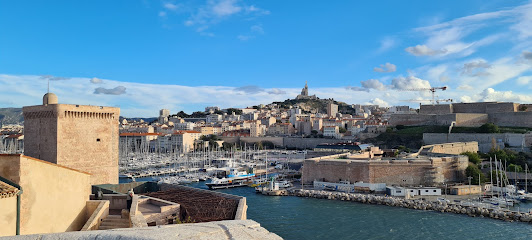
Palais Longchamp
Explore the majestic Palais Longchamp in Marseille, a stunning blend of history, art, and nature in one iconic location.

Marseille Cathedral
Discover the awe-inspiring Marseille Cathedral, a breathtaking architectural masterpiece overlooking the Mediterranean Sea with rich history and vibrant artistry.
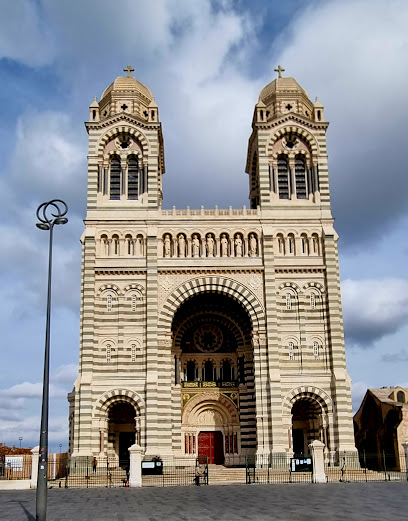
Cosquer Méditerranée
Discover the breathtaking underwater world of Cosquer Méditerranée in Marseille, where prehistoric art and marine life converge for an unforgettable adventure.
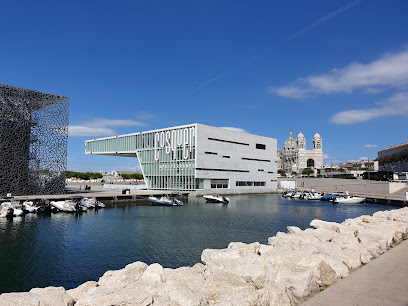
Musée Regards de Provence
Explore Marseille's maritime art heritage at Musée Regards de Provence, an inspiring art museum showcasing captivating works that celebrate the beauty of Provence.
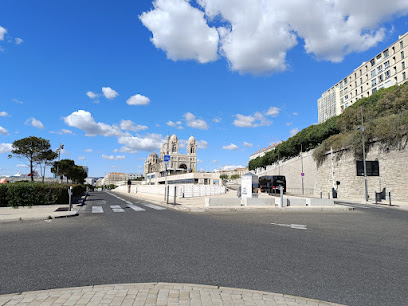
Place d'Armes
Explore the historic Place d'Armes at Fort Saint-Jean in Marseille, a captivating blend of history, art, and breathtaking views.
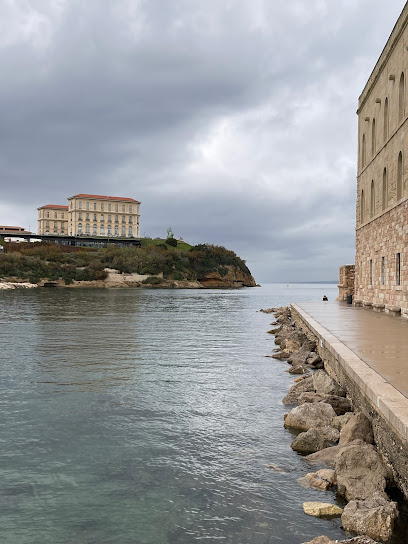
Teddy Bear Statue (Oursjayet 2020)
Discover the whimsical Teddy Bear Statue in Marseille, a charming attraction perfect for family photos and a delightful addition to your travel itinerary.
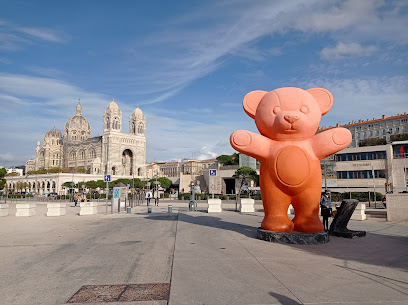
Place d'avieux
Experience the heart of Marseille at Place d'Arvieux, where history, culture, and local life converge in a vibrant square.

Fresque murale
Explore the vibrant Fresque Murale in Marseille, a stunning mural that captures the artistic and cultural essence of this remarkable French city.
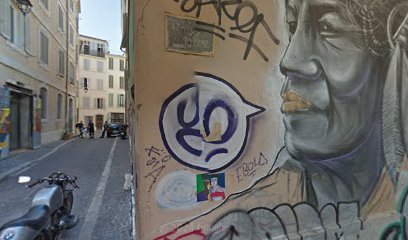
Essential places to dine
Brasserie de la Joliette
Experience authentic French cuisine at Brasserie de la Joliette in Marseille – a perfect blend of tradition and modernity in every bite.

Le Palais de la Major - Restaurant Marseille
Discover exquisite French cuisine with breathtaking views at Le Palais de la Major in Marseille – where every meal is a celebration of flavor.
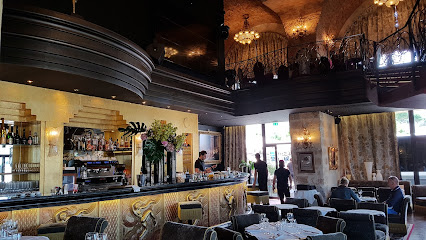
Le Comptoir des Docks
Experience authentic Mediterranean flavors at Le Comptoir des Docks in Marseille's lively Docks Atrium - a must-visit restaurant for food lovers.
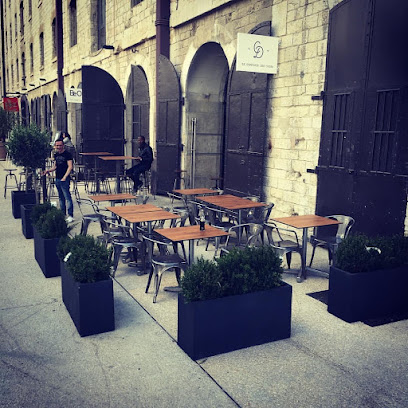
Le Comptoir de la Joliette
Discover Le Comptoir de la Joliette: A Culinary Gem Offering Tapas, Cocktails, and Live Music in Marseille's Vibrant Waterfront.
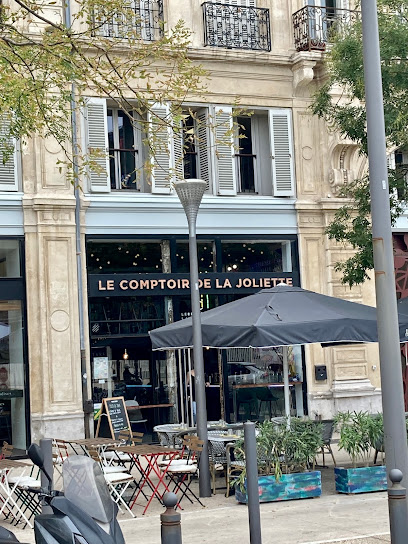
MundArt - Restaurant Marseille Joliette République
Discover MundArt in Marseille: where Mediterranean flavors meet artistic expression in an unforgettable dining experience.
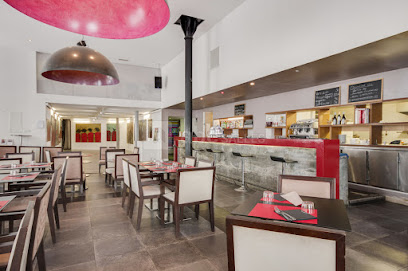
Picnic
Discover authentic Italian flavors at Picnic in Marseille - home of delicious pizzas and warm hospitality.
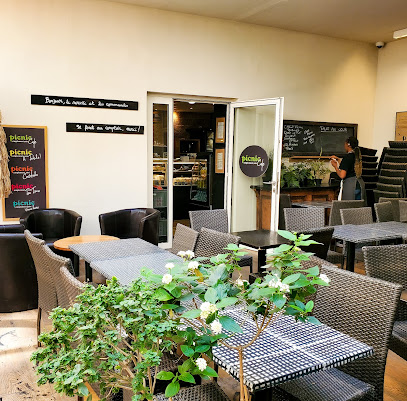
La Fabrique Marseillaise La Table De L'olivier
Experience authentic French and Mediterranean cuisine at La Table De L'olivier in Marseille - A culinary delight not to be missed!
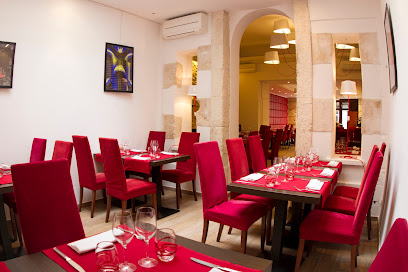
La Table Euromed
Experience authentic French cuisine at La Table Euromed in Marseille – where culinary tradition meets modern flair.
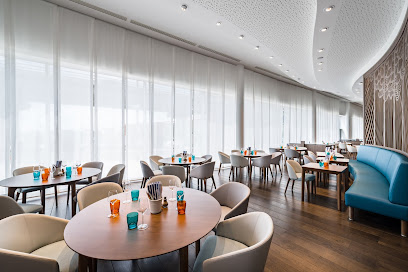
Spok - La Joliette I Cantine Du Déjeuner
Experience the vibrant flavors of Marseille at Spok - La Joliette, where modern cuisine meets local tradition.

La Folie Du Bois
Experience authentic Provençal cuisine at La Folie Du Bois in Marseille, where fresh ingredients meet warm hospitality.
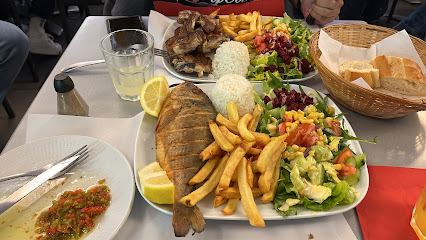
Markets, malls and hidden boutiques
Boutique Orange Joliette - Marseille
Explore the innovative Boutique Orange Joliette in Marseille for all your mobile phone and accessory needs while enjoying the vibrant city culture.
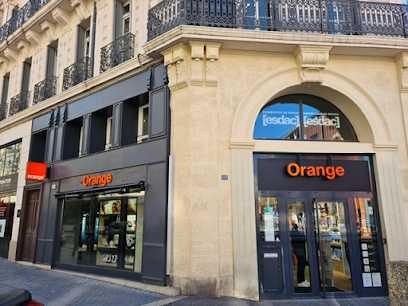
Trois Fenêtres
Explore Trois Fenêtres in Marseille for unique gifts, vintage finds, and handcrafted treasures that capture the spirit of the region.
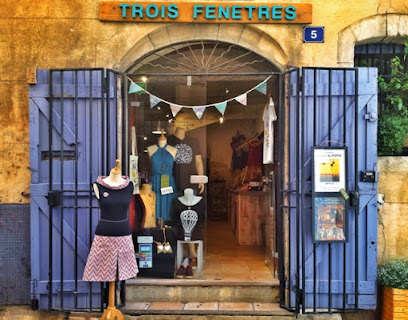
Pandora
Explore the exquisite elegance of Pandora in Marseille, where stunning jewelry meets exceptional craftsmanship in a vibrant shopping experience.
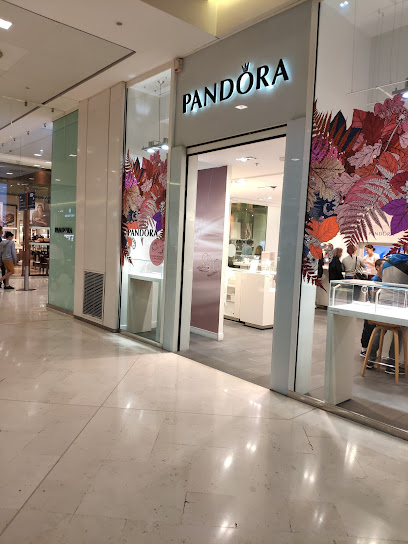
I.D DECO Magasin de meubles et décoration à Marseille
Explore exquisite furniture and decor at I.D DECO in Marseille's Docks Village, where modern design meets timeless elegance.
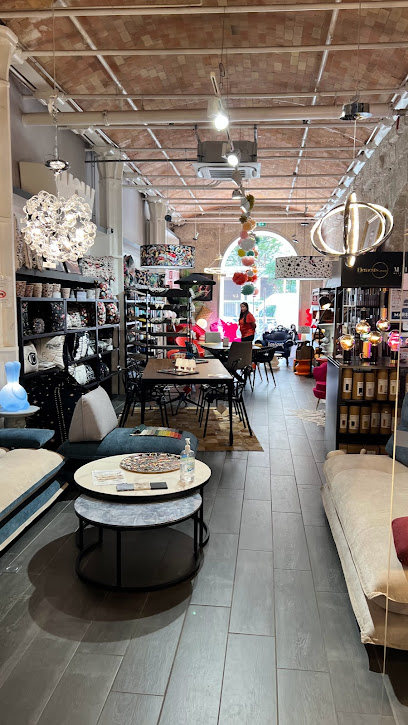
Lyly Concept Store Marseille
Discover unique gifts and exquisite accessories at Lyly Concept Store in Marseille, a treasure trove of local creativity and style.
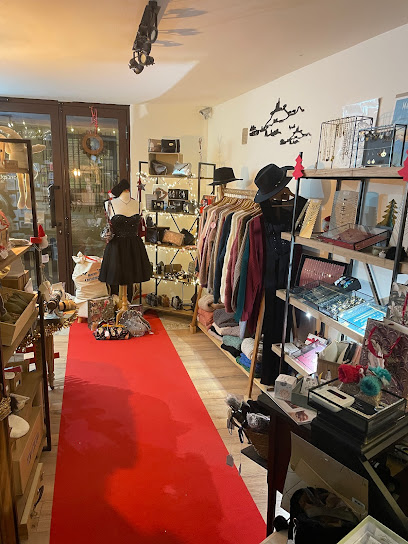
Mistral Marseille
Explore Mistral Marseille for unique souvenirs and local crafts that capture the spirit of this vibrant city.
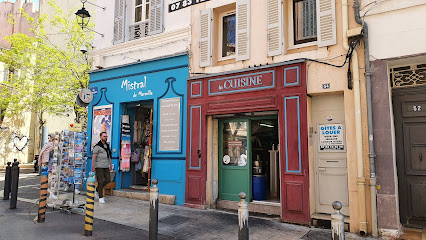
Boutique Salam
Explore unique artisanal treasures at Boutique Salam, a charming boutique in the heart of Marseille that reflects the city's vibrant culture.
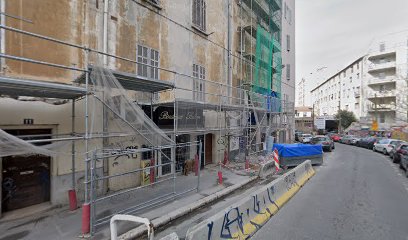
Mx Shop
Experience the essence of Marseille at Mx Shop, where quality meets creativity in a vibrant shopping atmosphere.
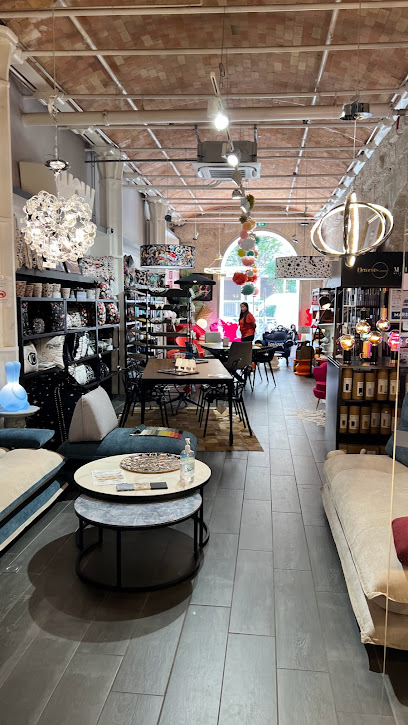
Valentine And Co
Discover unique treasures at Valentine And Co, a vibrant store in Marseille that embodies local culture and creativity, perfect for souvenir shopping.
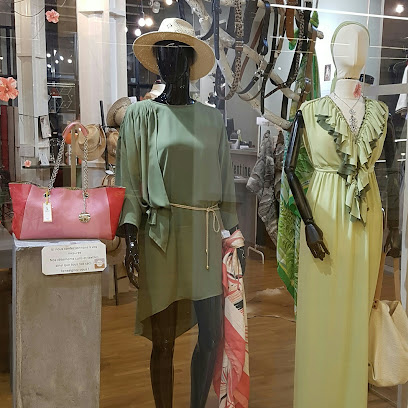
J&an’s Store
Explore J&an’s Store in Marseille for unique clothing that embodies local style and fashion trends.
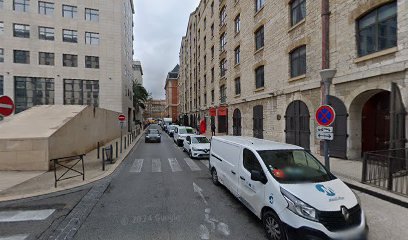
Essential bars & hidden hideouts
White Rabbit
Experience the vibrant spirit of White Rabbit, a lively bar in Marseille offering a unique blend of Irish pub charm and modern nightlife.
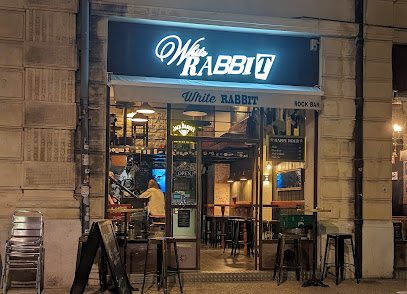
Droit Au Fut
Discover the lively Droit Au Fut in Marseille—your go-to beer hall and cocktail bar for an unforgettable night out in the city.
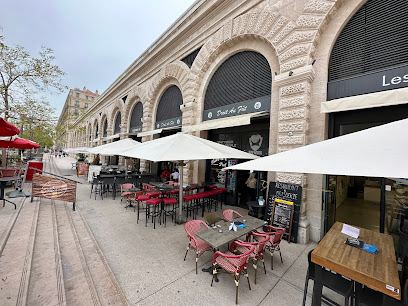
The F pub
Experience lively nights at The F Pub in Marseille, where great drinks, friendly ambiance, and local culture converge for an unforgettable outing.
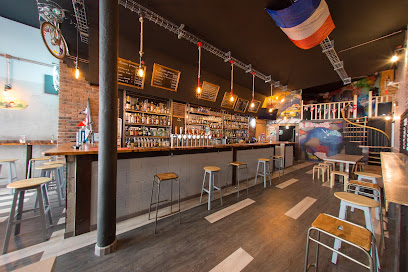
Le Comptoir de la Joliette
Experience the vibrant culinary and musical scene at Le Comptoir de la Joliette, Marseille's premier tapas and cocktail bar.
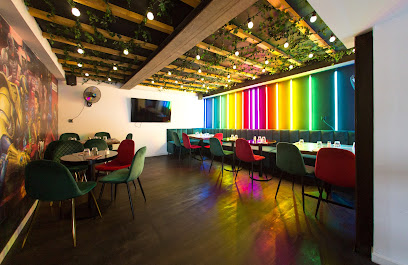
Dandy'O
Experience the vibrant flavors of Marseille at Dandy'O, a bustling beer hall and brewery offering a unique culinary adventure.
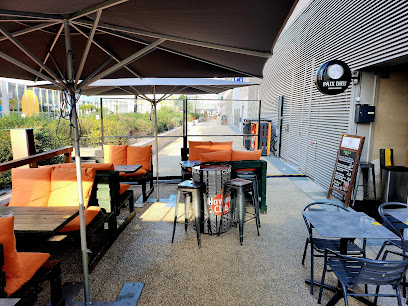
Les voutes Virgo de la Major
Experience the vibrant atmosphere and delicious tapas at Les Voutes Virgo de la Major, a top destination for food lovers in Marseille.
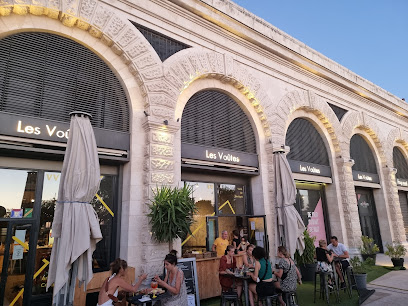
Mx Bar
Discover the lively ambiance and exquisite drink selection at Mx Bar, a premier destination in Marseille for an unforgettable night out.
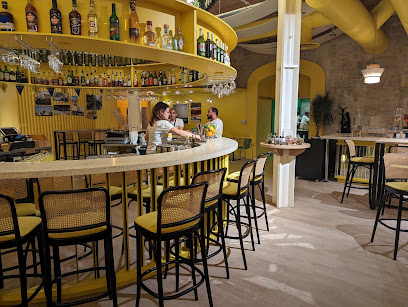
Bar Joseph
Experience the vibrant heart of Marseille at Bar Joseph, a cozy spot offering local flavors and a welcoming atmosphere.
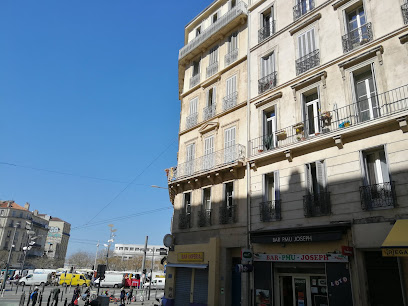
Bar Forbin
Discover the vibrant atmosphere of Bar Forbin, a must-visit bar in Marseille offering a delightful selection of drinks and a cozy ambiance.
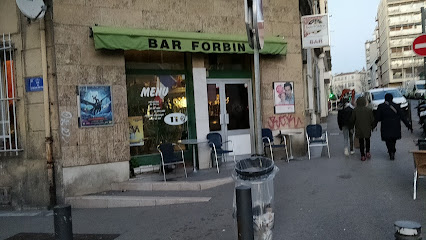
Bar Imperial Seifddine
Experience the vibrant nightlife and local flavor at Bar Imperial Seifddine, a premier bar in Marseille, perfect for unwinding and socializing.
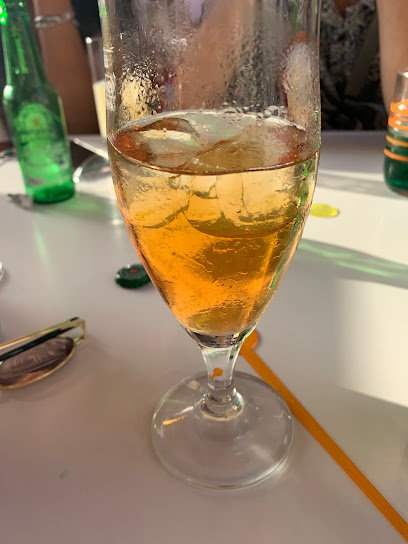
Local Phrases
-
- HelloBonjour
[bohn-zhoor] - GoodbyeAu revoir
[oh ruh-vwah] - YesOui
[wee] - NoNon
[nohn] - Please/You're welcomeS'il vous plaît / De rien
[seel voo pleh / duh ryehn] - Thank youMerci
[mehr-see] - Excuse me/SorryExcusez-moi / Désolé
[ehk-skew-zay mwah / day-zoh-lay] - How are you?Comment ça va?
[koh-mohn sah vah] - Fine. And you?Bien. Et vous?
[byen. ay voo] - Do you speak English?Parlez-vous anglais?
[par-lay voo ahn-glay] - I don't understandJe ne comprends pas
[zhuh nuh kohm-prahn pah]
- HelloBonjour
-
- I'd like to see the menu, pleaseJe voudrais voir la carte, s'il vous plaît
[zhuh voo-dray vwahr lah kart, seel voo pleh] - I don't eat meatJe ne mange pas de viande
[zhuh nuh mahnj pah duh vee-ahnd] - Cheers!Santé!
[sahn-tay] - I would like to pay, pleaseJe voudrais payer, s'il vous plaît
[zhuh voo-dray pay-ay, seel voo pleh]
- I'd like to see the menu, pleaseJe voudrais voir la carte, s'il vous plaît
-
- Help!Au secours!
[oh suh-coor] - Go away!Allez-vous en!
[ahl-lay vooz ahn] - Call the Police!Appelez la police!
[ah-pay-lay lah poh-lees] - Call a doctor!Appelez un médecin!
[ah-pay-lay uh med-sahn] - I'm lostJe suis perdu
[zhuh swee pair-doo] - I'm illJe suis malade
[zhuh swee mah-lahd]
- Help!Au secours!
-
- I'd like to buy...Je voudrais acheter...
[zhuh voo-dray zah-sheh-tay] - I'm just lookingJe regarde juste
[zhuh ruh-gard zhewst] - How much is it?Combien ça coûte?
[kohm-byen sah koot] - That's too expensiveC'est trop cher
[say troh shair] - Can you lower the price?Pouvez-vous baisser le prix?
[poo-vez voo bay-say luh pree]
- I'd like to buy...Je voudrais acheter...
-
- What time is it?Quelle heure est-il?
[kell err ay-teel] - It's one o'clockIl est une heure
[eel ay oon err] - Half past (10)Dix et demi
[dees ay dem-ee] - MorningMatin
[mah-tan] - AfternoonAprès-midi
[ah-pray mee-dee] - EveningSoir
[swahr] - YesterdayHier
[ee-air] - TodayAujourd'hui
[oh-zhoor-dwee] - TomorrowDemain
[duh-mahn] - 1Un
[uh] - 2Deux
[duh] - 3Trois
[twah] - 4Quatre
[kat] - 5Cinq
[sank] - 6Six
[sees] - 7Sept
[set] - 8Huit
[wheat] - 9Neuf
[nuhf] - 10Dix
[dees]
- What time is it?Quelle heure est-il?
-
- Where's a/the...?Où est...?
[oo ay...] - What's the address?Quelle est l'adresse?
[kell ay la-dress] - Can you show me (on the map)?Pouvez-vous me montrer (sur la carte)?
[poo-vez voo muh mohn-tray (surr lah kart)] - When's the next (bus)?Quand est le prochain (bus)?
[kahn ay luh proh-shan (bus)] - A ticket (to ....)Un billet (pour ....)
[uhn bee-yay (poor)]
- Where's a/the...?Où est...?
History of La Joliette
-
La Joliette's history is deeply intertwined with Marseille's development as a major port city. Established by Greek settlers around 600 BC, Marseille became a thriving maritime hub, and La Joliette emerged as a pivotal area for shipping and trade. The neighborhood's strategic position along the waterfront facilitated commerce and cultural exchange with the Mediterranean world.
-
The late 19th century marked a significant transformation for La Joliette, coinciding with the broader industrialization of Marseille. The construction of the railway and the expansion of the port led to an influx of factories, warehouses, and working-class housing. This industrial boom contributed to the neighborhood's reputation as an economic engine for the city, with the establishment of the Marseille docks playing a crucial role in its development.
-
In the 20th century, La Joliette underwent significant architectural changes, particularly during the 1980s and 1990s. The area witnessed a wave of urban renewal projects aimed at revitalizing the waterfront and improving infrastructure. Notable developments included the construction of the Docks Village, a contemporary shopping and cultural space, which reimagined the historical warehouses while preserving the area’s industrial heritage.
-
La Joliette has evolved into a vibrant cultural mosaic, reflecting the diverse populations that have settled in Marseille over the centuries. The neighborhood is home to a variety of cultural institutions, including the Musée des Civilisations de l'Europe et de la Méditerranée (MuCEM), which showcases the historical connections of Mediterranean cultures. This rich cultural landscape is indicative of Marseille's identity as a melting pot of traditions and influences.
-
Today, La Joliette continues to adapt to contemporary challenges while embracing its historical roots. The ongoing development projects aim to enhance the quality of life for residents and visitors alike, promoting sustainable growth while preserving the neighborhood's unique character. As Marseille evolves, La Joliette remains a focal point for innovation and cultural exchange in the city.
La Joliette Essentials
-
La Joliette is easily accessible from other neighborhoods in Marseille. You can take Metro Line 2 to the 'Joliette' station, which is centrally located in the neighborhood. Tram Line T2 also connects La Joliette to the Old Port and other central areas. For those arriving by train, the Marseille Saint-Charles station is just a short Metro ride away. Additionally, local buses serve various routes into and out of La Joliette.
-
La Joliette is well-served by public transport, including Metro, tram, and buses. The Metro Line 2 and Tram Line T2 provide quick access to the surrounding areas. Biking is also a popular option, with several bike-sharing programs available, such as the 'Le Vélo' system. Walking is a viable option as well, especially for exploring the waterfront and nearby attractions.
-
La Joliette is generally safe for tourists, but it is wise to remain vigilant, particularly in less busy areas. Avoid walking alone at night in secluded places. Areas around the docks may have higher crime rates, so it’s advisable to stay alert and keep personal belongings secure. As with any urban area, be cautious in crowded places.
-
In case of emergency, dial 112 for police, fire, or medical assistance. The nearest hospital is the Hôpital de la Timone, located a short distance from La Joliette. Pharmacies are also available throughout the neighborhood for minor health issues. It’s recommended to have travel insurance to cover any medical emergencies.
-
Fashion: Do dress comfortably but modestly. Avoid overly revealing clothing, especially when visiting religious sites. Religion: Do respect local customs, and be mindful of the attire in places of worship. Public Transport: Do keep your voice down and offer your seat to elderly passengers. Don’t eat or drink on public transport. Greetings: Do greet with a friendly 'Bonjour' and a smile. Eating & Drinking: Do enjoy the local cuisine, especially seafood. Don’t waste food or make a fuss if your order is not as expected.
-
To experience La Joliette like a local, visit the vibrant Marché des Capucins, where you can find fresh produce and local delicacies. Engage with the shopkeepers, as they often share insights about the neighborhood's history. Try the local cafés and bistros along the waterfront for an authentic dining experience. Also, check out the MuCEM (Museum of European and Mediterranean Civilizations) for cultural enrichment and stunning architecture.
Trending Landmarks in La Joliette
-
Palais Longchamp
-
Cathédrale La Major
-
Marseille Cathedral
-
Cosquer Méditerranée
-
Old Port of Marseille
-
Le Panier Marseillais
-
Abbaye Saint-Victor
-
Fort Saint-Jean
-
Place d'Armes
-
Tour du Roi René
-
Quartier du panier
-
Maison Diamantée
-
Mémorial des Déportations de la Ville de Marseille
-
Place de Lenche
-
Place des moulins
Nearby Cities to La Joliette
-
Things To Do in Aix-en-Provence
-
Things To Do in Avignon
-
Things To Do in Nîmes
-
Things To Do in Saint-Tropez
-
Things To Do in Montpellier
-
Things To Do in Cannes
-
Things To Do in Nice
-
Things To Do in Fontvieille
-
Things To Do in Les Moneghetti
-
Things To Do in Moneghetti
-
Things To Do in La Condamine
-
Things To Do in Monaco-Ville
-
Things To Do in Monte Carlo
-
Things To Do in Larvotto
-
Things To Do in Saint Roman









